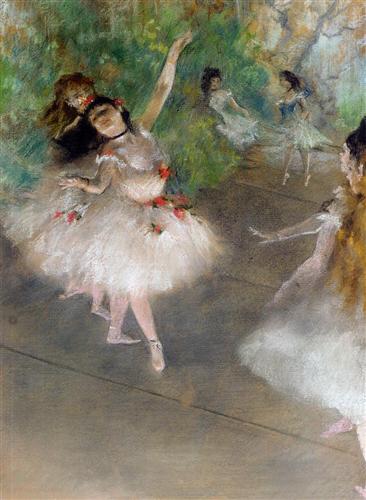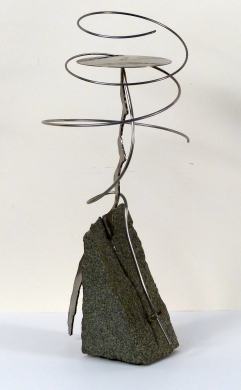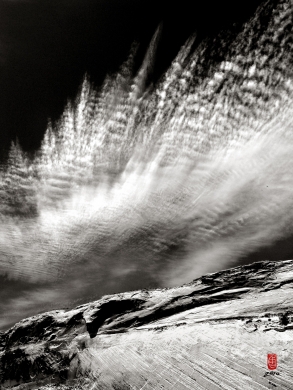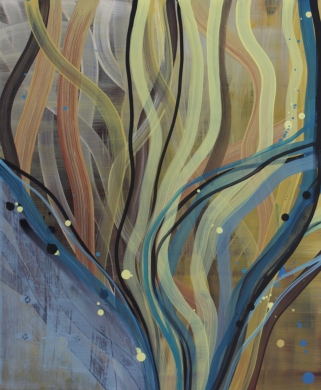Movement draws the eye. In art, it requires a more active participation from the viewer. Whether it is the depiction or anticipation of movement, artists can convey motion in their work in a variety of ways.
This early abstracted work by Marcel Duchamp depicts a figure in motion. The repetitive shapes and angles lead the eye forward in a blur of movement:
Using soft lines and figural positioning, the graceful, pastel dancers flutter and twirl across the stage in this Impressionist work by Edgar Degas:
The multiple diagonals and varied angles in this lively painting lead the eye rapidly across the canvas, mimicking a frenzy of movement:
The flowing, winding lines of this sculpture simulate graceful, sensual movement as the curves and flares lead the eye slowly upward:
This unique aerial perspective and blurred outline give the motion of a brisk stride to the central figure:
Contrasted with the stable stone base, the twisting metal spiral holds kinetic energy. It appears to burst forth from the stone in a swirl of motion:
Motion can also be captured in a photograph. This stunning work creates the sensation of a feathery mass of clouds rushing towards you:
With a few simple strokes, the artist constructs the erratic flight path of the tiny hummingbird, imbuing this abstract work with energy:
The flowing lines and subtle blues give this work the soothing sensation of an underwater plant rippling gently in the current:
Liven up any space with an artwork full of energy and movement. There are endless possibilities!













You have an artist (moi : ) who sometimes deals with motion in Duchamp (well… Muybridge’s fashion) but personal style.
http://pixelspainting.com/NudeDescending.jpg
Laurentiu